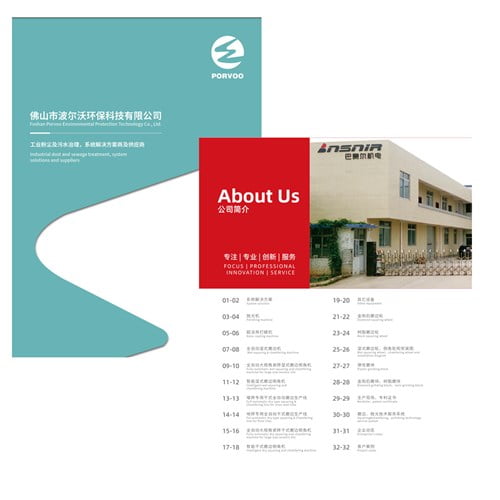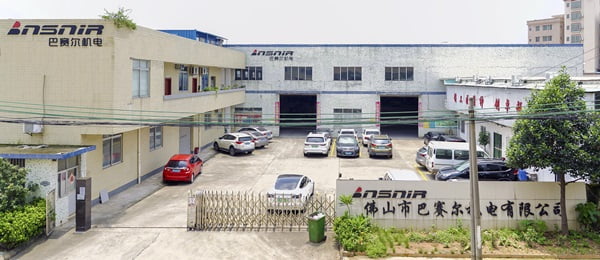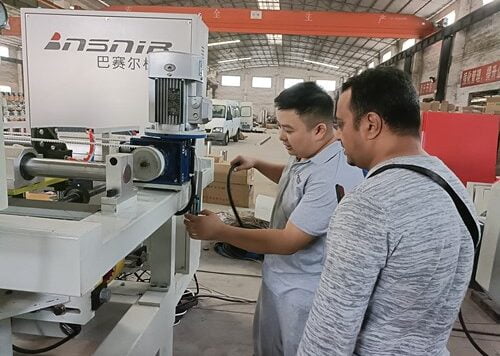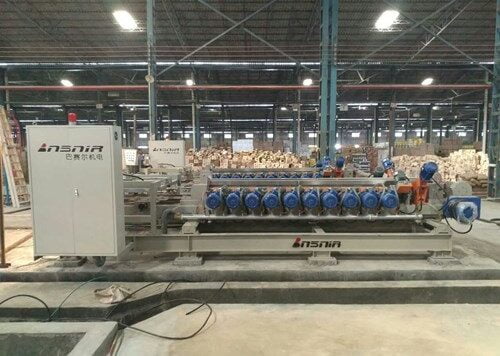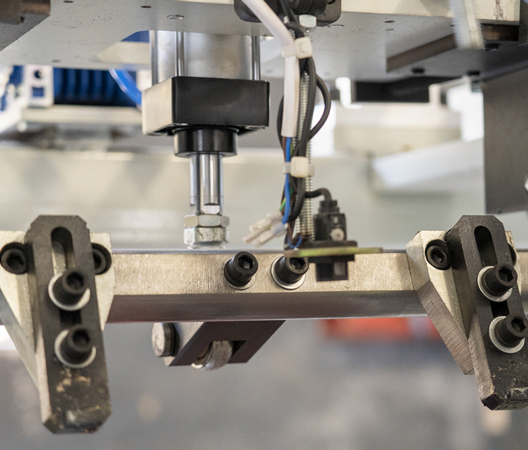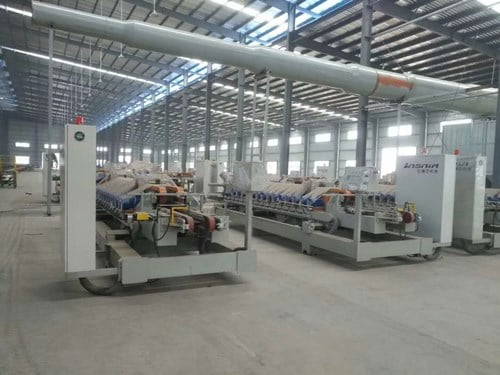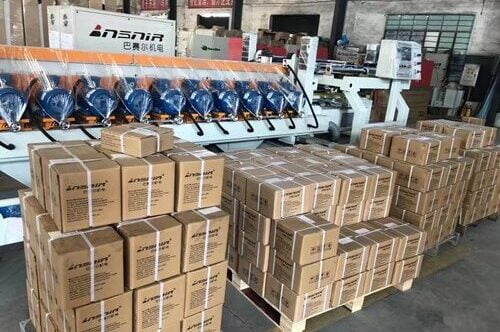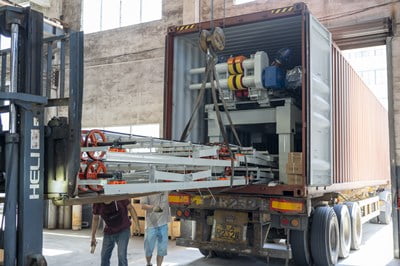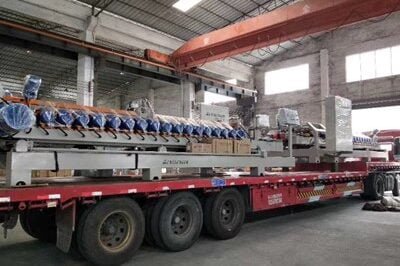The ceramic tile manufacturing industry faces mounting pressure to deliver superior products while maintaining competitive production costs. Efficiency strategies in polishing operations can mean the difference between thriving in a competitive market and struggling with razor-thin margins. Recent industry data reveals that optimized polishing processes can increase throughput by up to 35% while reducing defect rates by 20%.
Manufacturing facilities worldwide grapple with inconsistent surface quality, excessive material waste, and unpredictable equipment downtime. These challenges don’t just impact immediate production targets – they create cascading effects that compromise delivery schedules, strain customer relationships, and erode profit margins. When polishing operations run inefficiently, manufacturers often resort to costly overtime shifts and rush orders for replacement materials, further amplifying operational expenses.
This comprehensive guide presents seven proven strategies that transform polishing operations from cost centers into competitive advantages. Through detailed analysis of modern equipment solutions, process optimization techniques, and data-driven approaches, we’ll explore how leading manufacturers achieve consistent quality improvements while dramatically reducing operational costs. BASAIR Tech has pioneered many of these innovations, helping facilities worldwide achieve remarkable efficiency gains.
What Are the Key Challenges in Ceramic Tile Polishing Efficiency?
Understanding operational bottlenecks represents the foundation of any successful efficiency strategy. Manufacturing facilities encounter three primary challenge categories that significantly impact productivity and profitability.
Equipment-Related Limitations
Traditional polishing equipment often operates with fixed parameters that cannot adapt to varying tile specifications or quality requirements. This inflexibility creates substantial inefficiencies when production lines switch between different tile types, sizes, or surface finishes. Downtime during changeovers can extend 2-4 hours, representing significant lost productivity.
Our experience shows that older polishing systems frequently suffer from inconsistent pressure distribution across tile surfaces, leading to uneven finishes that require costly rework. Additionally, worn polishing heads and inadequate dust collection systems create environmental compliance issues while reducing overall system performance.
Process-Related Obstacles
Manual quality control processes introduce human error variables that compromise consistency and slow production speeds. Traditional inspection methods rely heavily on visual assessment, which varies between operators and shifts. This inconsistency creates quality fluctuations that damage brand reputation and increase customer complaints.
Process optimization becomes particularly challenging when facilities lack real-time monitoring capabilities. Without immediate feedback on polishing parameters, operators cannot make timely adjustments to maintain optimal performance levels throughout production runs.
| Challenge Category | Impact on Efficiency | Typical Resolution Time |
|---|---|---|
| Equipment Downtime | 15-25% production loss | 4-8 hours |
| Quality Inconsistencies | 8-12% rework rate | 2-3 hours |
| Manual Processes | 20-30% slower throughput | Ongoing |
Workforce Training Gaps
Skilled technicians capable of optimizing polishing operations remain increasingly scarce across manufacturing regions. New employees often require 6-12 months to achieve proficiency with complex polishing systems, creating extended periods of reduced productivity.
Knowledge transfer between experienced and novice operators frequently proves inadequate, resulting in repeated mistakes and inconsistent application of best practices. This challenge becomes particularly acute during shift changes when communication breakdowns can disrupt carefully optimized processes.
How Does Modern Equipment Selection Impact Operational Efficiency?
Contemporary polishing equipment incorporates advanced technologies that dramatically enhance productivity improvement while reducing operational complexity. Strategic equipment selection forms the cornerstone of sustainable efficiency gains.
Automated Control Systems
Modern line polishing machines feature sophisticated control systems that automatically adjust polishing parameters based on real-time feedback. These systems monitor surface quality, polishing head wear, and material characteristics to optimize performance continuously.
Automated systems eliminate the guesswork traditionally associated with parameter adjustments. Operators can establish optimal settings for different tile types, and the system automatically recalls and applies these parameters during production runs. This automation reduces setup time by 60-70% while ensuring consistent quality across all production batches.
Advanced Polishing Head Technology
Next-generation polishing heads incorporate wear-resistant materials and improved geometric designs that extend operational life by 40-50%. These enhancements reduce maintenance frequencies while maintaining superior surface finishes throughout extended production runs.
Variable pressure distribution systems allow polishing heads to adapt to different tile thicknesses and surface textures automatically. This adaptability eliminates the need for manual adjustments and reduces the risk of surface damage during processing.
Integrated Quality Monitoring
Real-time quality assessment systems continuously evaluate surface characteristics using advanced sensors and imaging technology. These systems detect quality variations immediately, enabling instant corrective adjustments before defective products advance through the production line.
According to manufacturing efficiency specialists, integrated monitoring systems reduce defect rates by 35-45% while eliminating the need for extensive manual inspection processes. This technology particularly benefits facilities producing premium tiles where surface quality directly impacts market value.
What Role Does Process Optimization Play in Productivity Enhancement?
Process optimization transforms chaotic production environments into streamlined operations that maximize resource utilization while minimizing waste and inefficiency.
Sequential Operation Refinement
Analyzing and refining the sequence of polishing operations reveals significant opportunities for performance enhancement. Leading manufacturers have discovered that adjusting the pressure progression and grit sequence can reduce processing time by 25-30% without compromising surface quality.
In our experience, facilities that implement systematic process mapping identify an average of 7-9 improvement opportunities within their existing polishing lines. These improvements typically focus on eliminating redundant steps, optimizing material flow, and reducing handling time between operations.
Parameter Standardization
Establishing standardized parameters for different tile categories eliminates variability that commonly leads to quality issues and extended processing times. Standardization efforts should encompass polishing pressures, speeds, coolant flow rates, and quality checkpoints.
A recent study by ceramic industry researchers demonstrated that parameter standardization reduces processing time variations by 40-50% while improving surface quality consistency. This standardization particularly benefits facilities with multiple operators across different shifts.
Material Flow Optimization
Efficient material handling systems minimize transportation time and reduce the risk of damage during processing. Modern facilities implement automated conveyor systems that maintain consistent tile positioning and eliminate manual handling wherever possible.
Strategic placement of quality control checkpoints within the material flow prevents defective products from consuming additional processing resources. Early detection systems save approximately 15-20% of total processing costs by eliminating unnecessary downstream operations on defective tiles.
| Process Element | Optimization Potential | Implementation Timeline |
|---|---|---|
| Operation Sequence | 25-30% time reduction | 2-3 weeks |
| Parameter Standards | 40-50% consistency gain | 1-2 months |
| Material Flow | 15-20% cost savings | 4-6 weeks |
How Can Workflow Automation Maximize Performance Enhancement?
Automation technologies eliminate human variables that frequently compromise operational efficiency while enabling consistent, high-speed production that surpasses manual capabilities.
Automated Loading Systems
Sophisticated loading mechanisms position tiles precisely for optimal polishing while maintaining consistent throughput speeds. These systems eliminate positioning errors that commonly cause surface defects and reduce processing efficiency.
Automated loading reduces labor requirements by 50-60% while increasing processing speeds by 20-25%. The consistent positioning achieved through automation ensures uniform polishing across all tile surfaces, eliminating the quality variations associated with manual handling.
Robotic Quality Inspection
Advanced robotic inspection systems evaluate surface quality using multiple detection methods simultaneously. These systems identify defects that human inspectors might miss while maintaining inspection speeds that exceed manual capabilities by 300-400%.
Robotic systems generate detailed quality reports that enable continuous process improvement. This data helps identify trends and patterns that inform optimization decisions, creating a feedback loop that drives sustained efficiency improvements.
Predictive Maintenance Integration
Automated systems continuously monitor equipment performance and predict maintenance requirements before failures occur. This proactive approach reduces unplanned downtime by 70-80% while extending equipment life through optimal maintenance timing.
Predictive maintenance systems analyze vibration patterns, temperature variations, and power consumption to identify potential issues early. Manufacturing facilities report that predictive maintenance reduces total maintenance costs by 25-30% while improving equipment reliability.
What Maintenance Strategies Drive Long-term Efficiency Improvements?
Strategic maintenance approaches prevent efficiency degradation while extending equipment life and maintaining consistent production quality.
Preventive Maintenance Scheduling
Systematic maintenance scheduling based on production hours and performance metrics ensures equipment operates at peak efficiency throughout its operational life. Well-designed maintenance programs reduce unexpected failures by 85-90%.
Preventive maintenance schedules should incorporate manufacturer recommendations while adapting to specific production conditions and usage patterns. Facilities operating in dusty environments or processing abrasive materials may require more frequent maintenance intervals.
Component Monitoring Systems
Advanced monitoring systems track the performance of critical components such as polishing heads, motors, and control systems. Early detection of performance degradation enables timely replacements that prevent costly failures and production disruptions.
Component monitoring provides valuable data for optimizing replacement schedules and identifying components that consistently underperform. This information guides procurement decisions and helps facilities maintain optimal spare parts inventories.
Lubrication and Cleaning Protocols
Proper lubrication and cleaning procedures significantly extend equipment life while maintaining optimal performance levels. These protocols should be documented and standardized across all shifts to ensure consistency.
Regular cleaning of polishing heads and dust collection systems prevents performance degradation that commonly occurs in high-dust environments. Facilities that implement rigorous cleaning protocols report 20-25% longer equipment life and improved surface quality consistency.
How Do Quality Control Systems Enhance Overall Productivity?
Integrated quality control systems prevent defects from progressing through production while providing data that drives continuous improvement initiatives.
Real-time Surface Analysis
Modern quality control systems analyze surface characteristics continuously during processing, enabling immediate corrections when quality parameters drift outside acceptable ranges. This real-time approach prevents batch losses and reduces rework requirements.
Surface analysis systems utilize advanced imaging and measurement technologies to evaluate gloss levels, surface roughness, and color consistency. These measurements provide quantitative feedback that enables precise process adjustments.
Statistical Process Control
Statistical analysis of quality data identifies trends and patterns that inform optimization decisions. Control charts and capability studies help facilities understand process stability and identify improvement opportunities.
Facilities implementing statistical process control report 30-40% reductions in quality variations while achieving better understanding of process capabilities. This data-driven approach enables targeted improvements that deliver measurable results.
Automated Sorting Systems
Advanced sorting systems automatically separate products based on quality criteria, ensuring consistent quality delivery while maximizing yield from acceptable products. These systems reduce labor requirements while improving sorting accuracy.
Automated sorting eliminates human error in quality assessment while maintaining processing speeds that exceed manual capabilities. The consistent application of quality criteria ensures customers receive products that meet their specifications.
What Training and Skills Development Approaches Boost Operational Efficiency?
Workforce development programs ensure operators possess the knowledge and skills necessary to maximize equipment capabilities while maintaining consistent production quality.
Technical Skills Training
Comprehensive training programs should cover equipment operation, maintenance procedures, quality control methods, and troubleshooting techniques. Well-trained operators can achieve 15-20% higher productivity while reducing equipment damage and quality issues.
Training programs should incorporate hands-on practice with actual equipment under various operating conditions. Simulation-based training helps operators develop problem-solving skills without risking production disruptions.
Cross-training Programs
Cross-training initiatives ensure multiple operators can perform critical functions, reducing vulnerability to absenteeism and enabling flexible workforce allocation. Cross-trained teams can maintain production during equipment maintenance and shift changes.
Facilities with comprehensive cross-training programs report 25-30% better production flexibility and reduced sensitivity to workforce disruptions. This approach particularly benefits facilities with complex polishing operations that require specialized skills.
Continuous Learning Culture
Establishing a culture that encourages continuous learning and improvement ensures operators remain current with evolving technologies and best practices. Regular training updates help operators maximize new equipment capabilities.
Continuous learning programs should include manufacturer training, industry conferences, and peer learning opportunities. Operators who participate in ongoing education typically achieve 20-25% better performance outcomes.
How Can Data Analytics Transform Ceramic Tile Polishing Operations?
Data analytics capabilities convert operational information into actionable insights that drive systematic improvements across all aspects of polishing operations.
Production Performance Metrics
Comprehensive data collection systems track key performance indicators such as throughput rates, quality metrics, equipment efficiency, and resource utilization. This data enables fact-based decision making and identifies optimization opportunities.
Advanced analytics systems correlate multiple variables to identify relationships that might not be apparent through traditional analysis methods. These insights often reveal unexpected optimization opportunities that deliver significant efficiency gains.
Predictive Analytics Applications
Machine learning algorithms analyze historical data to predict future performance and identify potential problems before they impact production. Predictive capabilities enable proactive management that prevents efficiency losses.
Predictive analytics particularly benefit maintenance planning, quality control, and production scheduling. Facilities using predictive analytics report 40-50% fewer unexpected disruptions and more consistent production performance.
Benchmarking and Optimization
Data analytics enable continuous benchmarking against historical performance and industry standards. This comparative analysis identifies areas where performance falls short of potential and guides improvement priorities.
| Analytics Application | Efficiency Impact | Implementation Period |
|---|---|---|
| Performance Metrics | 15-20% improvement visibility | 1-2 months |
| Predictive Analytics | 40-50% fewer disruptions | 3-4 months |
| Benchmarking Systems | 25-30% optimization opportunities | 2-3 months |
“Data-driven decision making has revolutionized our polishing operations, enabling us to achieve consistency and efficiency levels that were previously impossible.” – Manufacturing Operations Director
Successful implementation of data analytics requires investment in appropriate software platforms and operator training. However, the return on investment typically exceeds 300-400% within the first year of implementation.
Conclusion
The seven strategies outlined in this guide represent a comprehensive approach to transforming ceramic tile polishing operations from efficiency challenges into competitive advantages. Modern equipment selection, process optimization, workflow automation, strategic maintenance, quality control integration, workforce development, and data analytics work synergistically to create sustainable improvements.
Leading manufacturers achieve remarkable results by implementing these efficiency strategies systematically rather than pursuing isolated improvements. Facilities that embrace comprehensive optimization typically realize 35-45% productivity improvements while reducing operational costs by 20-30%. The integration of advanced technologies with proven operational practices creates a foundation for sustained competitive advantage.
The future of ceramic tile polishing lies in intelligent, automated systems that adapt continuously to changing production requirements while maintaining superior quality standards. Manufacturers who invest in these capabilities today position themselves for long-term success in an increasingly competitive global market.
For facilities ready to transform their polishing operations, the journey begins with honest assessment of current capabilities and systematic implementation of proven improvement strategies. The advanced polishing solutions available today provide the technological foundation necessary to achieve world-class efficiency levels.
What specific efficiency challenges does your facility face, and which of these strategies offers the greatest potential for immediate impact in your operation?
Frequently Asked Questions
Q: What does “Increasing Efficiency in Ceramic Tile Polishing: 7 Strategies” mean for tile manufacturers?
A: Increasing efficiency in ceramic tile polishing involves applying specific strategies and technologies to make the polishing process faster, more precise, and cost-effective. It means using methods like automated line polishing systems, optimal abrasive grit progression, and advanced polishing techniques to achieve high-quality finishes while reducing energy use, production time, and labor needs. For manufacturers, this translates to higher productivity, consistent tile quality, and lower operational costs.
Q: What are some basic strategies to increase efficiency in ceramic tile polishing?
A: Basic strategies to improve efficiency include:
- Implementing precise grit progression with 4-6 stages to optimize surface quality and speed.
- Utilizing progressive polishing methods that use increasingly fine abrasives for smooth finishes.
- Maintaining proper feed rates during grinding and polishing to balance quality and throughput.
These steps ensure the tile polishing process is both effective and efficient without compromising surface quality.
Q: How do modern line polishing systems contribute to increased efficiency?
A: Modern line polishing systems automate much of the polishing process, combining multiple polishing heads in a single continuous line. This reduces manual handling and operator requirements, increases tile processing speed to 1000-1500 tiles per hour, lowers energy consumption by 25-35%, and enhances quality consistency. Additionally, these systems use sensors and machine learning to adapt to tile variations and predict maintenance, further optimizing production.
Q: What role does abrasive selection play in improving polishing efficiency?
A: Choosing the right abrasives is crucial; it directly impacts both the surface finish and production speed. Using a well-planned grit progression from coarser to finer abrasives helps remove material effectively while minimizing defects. Proper abrasives combined with controlled feed rates maximize surface smoothness and reduce polishing time, contributing significantly to overall process efficiency.
Q: Can technological advancements like Industry 4.0 improve ceramic tile polishing efficiency?
A: Yes, Industry 4.0 technologies enhance efficiency by enabling remote monitoring, real-time optimization, and predictive maintenance of polishing lines. Sensors continuously assess tile surface conditions and machine performance, allowing adjustments on the fly to maintain quality and minimize downtime. These innovations lead to 20-30% improvements in equipment effectiveness and lower maintenance costs.
Q: How do specialized edge finishing techniques relate to increasing efficiency in ceramic tile polishing?
A: Edge finishing techniques like precision grinding, chamfering, and beveling improve tile durability and aesthetic appeal, which are critical quality parameters. Mastering these techniques as part of the polishing process ensures edges are consistently finished to specification, preventing rework or rejects. Efficient edge finishing reduces processing time per tile and elevates the final product’s market value, supporting overall polishing efficiency.
## External Resources 1. [Understanding the Ceramic Tile Polishing Process - Basair](https://basair-tec.com/understanding-the-ceramic-tile-polishing-process/) - Discusses methods for optimizing the ceramic tile polishing process, including matching polishing parameters to application needs, processing speed, abrasive selection, and quality assurance measures for increased efficiency. 2. [7 Essential Techniques for Ceramic Tile Edge Finishing | Basair](https://basair-tools.com/7-essential-techniques-for-ceramic-tile-edge-finishing/) - Outlines seven advanced techniques essential for high-quality ceramic tile edge finishing, relevant for professionals seeking to improve efficiency and quality in polishing operations. 3. [POLISHING OF CERAMIC TILES - CiteSeerX (PDF)](https://citeseerx.ist.psu.edu/document?repid=rep1&type=pdf&doi=9d1a50fd6583ac7d0392136ca11f0155e79c932f) - An in-depth study on the effect of various polishing wheels and parameters on the glossiness and quality of ceramic tiles, featuring data and recommendations for process improvement. 4. [OPTIMISATION OF THE POLISHING PROCESS FOR PORCELAIN ... (PDF) - Qualicer](https://www.qualicer.org/recopilatorio/ponencias/pdfs/0063307e.pdf) - Technical paper analyzing how minimizing abrasive stages and optimizing grit size sequences can lower costs and increase throughput in commercial tile polishing. 5. [How to Polish Tiles - Tile Devil](https://www.tiledevil.co.uk/blogs/news/how-to-polish-tiles) - Practical guide for polishing ceramic tiles efficiently at both residential and commercial scale, with tips and recommendations for choosing suitable equipment and materials. 6. [Ceramic Tile Polishing: Best Practices & Methods - CleanLink](https://www.cleanlink.com/cleanlinkminute/details/Ceramic-Tile-Polishing-Best-Practices-amp-Methods--60763) - Provides best practices for ceramic tile polishing, focusing on maintenance strategies, workflow efficiency, and techniques for achieving lasting results in high-traffic environments. 
